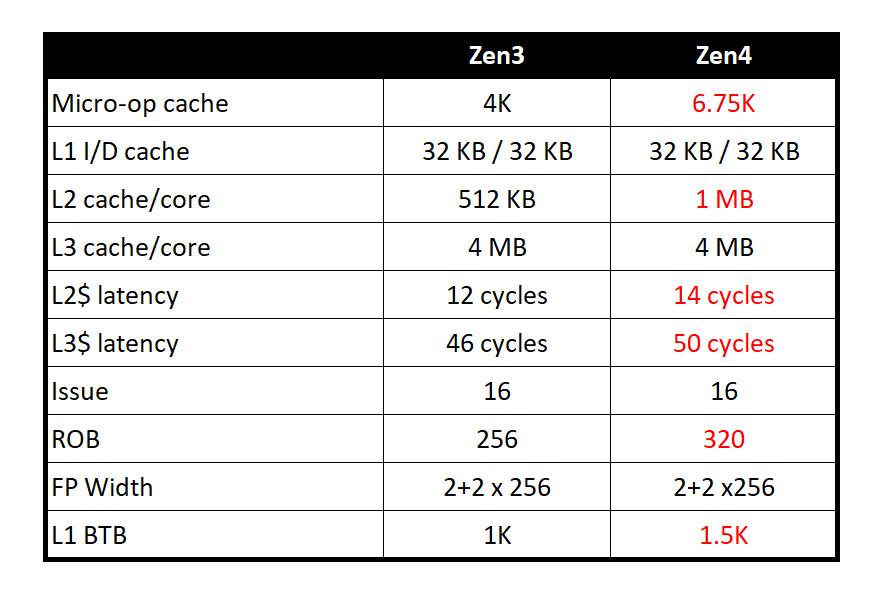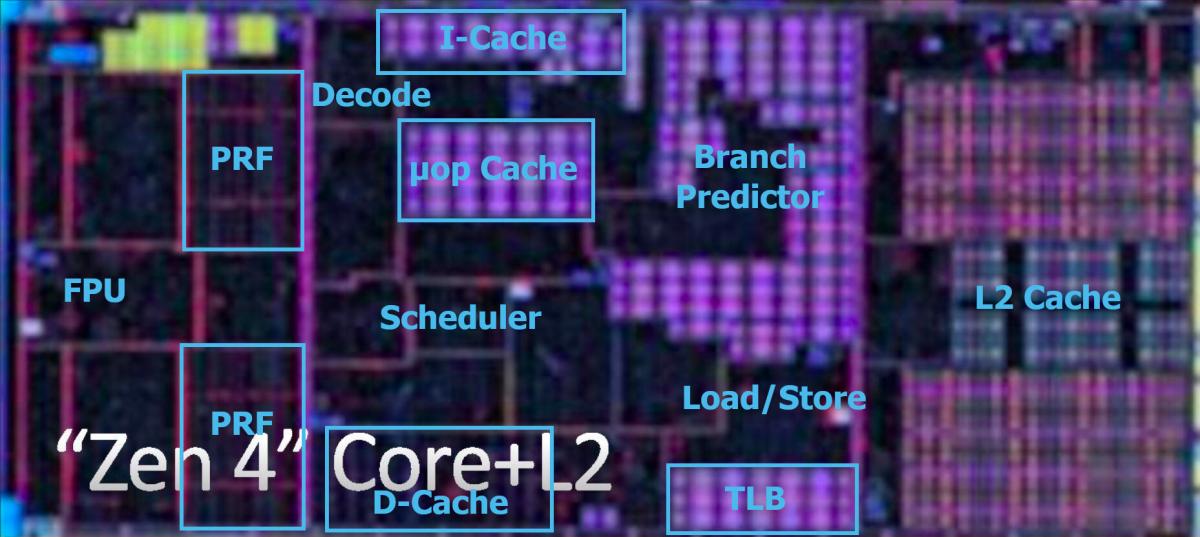Chiakokhua (aka Retired Engineer) posted a table comparing the latencies of the various caches to those of the "Zen 3" core. AMD's Mark Papermaster announced at the Ryzen 7000 launch event that the company has increased the core's micro-op cache from 4 K entries to 6.75 K entries.
The L1I and L1D caches remain 32 KB each, whereas the L2 cache has more than doubled in size. The expansion of the L2 cache increased latency somewhat, from 12 to 14. The shared L3 cache's latency has also increased, from 46 to 50 cycles. The dispatch stage's reorder buffer (ROB) has been increased from 256 to 320 entries. The size of the L1 branch target buffer (BTB) has been raised from 1 KB to 1.5 KB. Because of the transition to 5 nm, the Zen 4 CCD is slightly smaller than the Zen 3 CCD despite having more transistors (TSMC N5 process). The CCD is 70 mm2 in size, unlike the 83 mm2 Zen 3"CCD. The "Zen 4" CCD has 6.57 billion transistors, a 58 percent increase over the "Zen 3" CCD's 4.15 billion transistors.The cIOD (client I/O die) is seeing a lot of innovation. It's manufactured on the 6 nm (TSMC N6) node, which is a significant improvement over the GlobalFoundries 12 nm node used for the cIOD of Ryzen 5000 series processors. Certain power-management capabilities from the Ryzen 6000 "Rembrandt" processors are also included. Aside from DDR5 memory controllers and a PCI-Express Gen 5 root complex, this cIOD includes an iGPU based on the RDNA2 graphics architecture. The new 6 nm cIOD measures 124.7 mm2, which is somewhat larger than the Ryzen 5000 series' 124.9 mm2 cIOD.
The multi-chip module Raphael contains one CCD for the 6-core and 8-core SKUs and two CCDs for the 12-core and 16-core SKUs. The Socket AM5 package is used to build "Raphael." AMD is said to be working on a small BGA packaging of "Raphael" for high-performance notebook platforms, dubbed "Dragon Range." These CPUs will be available in 45 W, 55 W, and 65 W TDP configurations, and will power high-end gaming notebooks.
AMD Zen 4 Die Cache Sizes, Latencies And Transistor Counts Detailed



